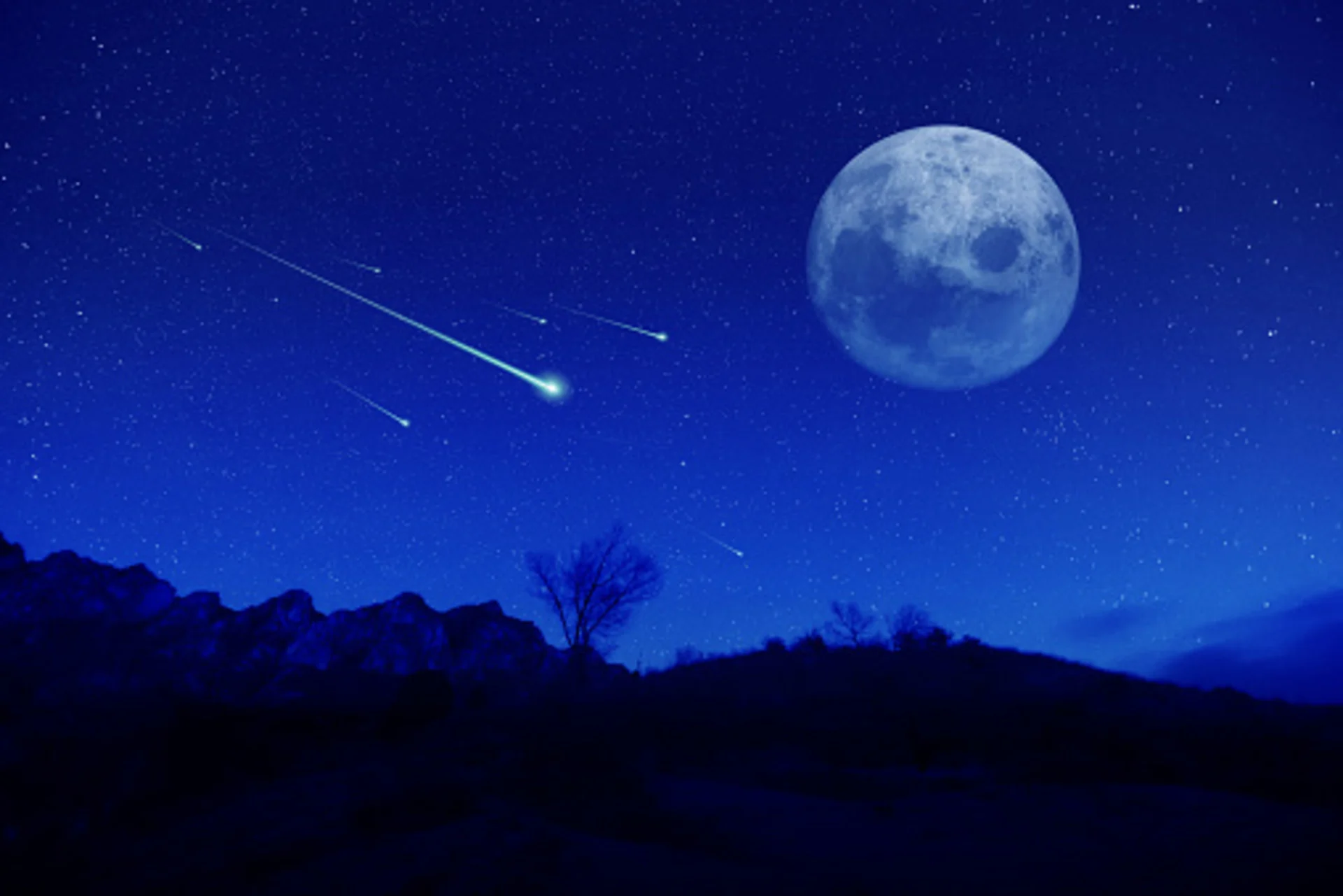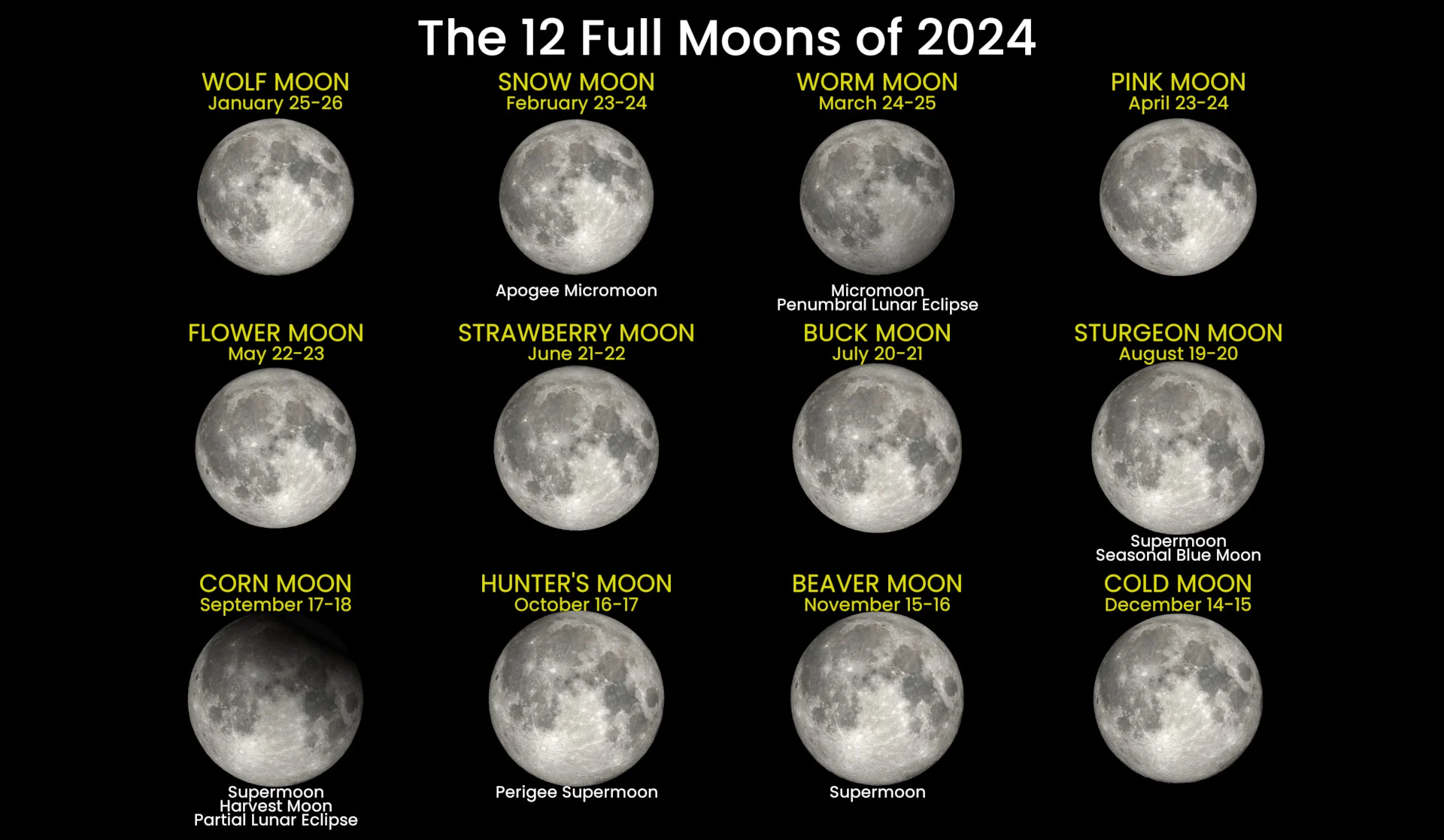
2024's final Supermoon rises tonight alongside meteor showers
Keep your eyes peeled for the Full Beaver Moon and the possibility of seeing flashes of light from the Taurid and Leonid meteor showers this weekend.
The Full Beaver Moon will shine bright in the sky Friday night, as the final supermoon of 2024 and the last supermoon we'll see until late 2025.
If you have reasonably clear skies over the next three nights, take a few moments to pause, look up, and appreciate Earth's celestial companion, the Moon. Although the Full Moon is timed for precisely 4:29 p.m. EST on Friday the 15th, according to NASA, it will actually appear full from Thursday night through Saturday night.
What is the Beaver Moon?
Since the 1930s, Farmer's Almanacs have been publishing a list of Full Moon names. The specific names they gave to the Full Moons of the year were adopted from Colonial American or European folklore, as well as the lunar calendars used by the Algonquin peoples who lived in what is now the northeastern United States and the Great Lakes region.

All 12 Full Moons of 2024 are presented in this infographic, along with their popular names, details about supermoons and micromoons (including which are the closest ('perigee') and farthest ('apogee')), and whether they are remarkable in some other way (Harvest Moon, lunar eclipse, etc.). Credit: Scott Sutherland/NASA's Scientific Visualization Studio/Fred Espenak
While the names borrowed from American and European folklore — Harvest Moon and Hunter's Moon — apply specifically to the Full Moon, those taken from indigenous sources do not. Instead, they are the names of the full 29-day 'lunations' of the lunar calendar, each representing the period of time between one New Moon and the next. These lunations are the equivalent to the months of the Gregorian calendar.
The name most often used for November's Full Moon is the Beaver Moon.
"This is the time of year when beavers begin to take shelter in their lodges, having laid up sufficient food stores for the long winter ahead. During the fur trade in North America, it was also the season to trap beavers for their thick, winter-ready pelts," The Old Farmer's Almanac says.
Other names for this Full Moon derived from indigenous lunar calendars include Frost Moon, Freezing Moon, Trading Moon, Whitefish Moon, and Digging/Scratching Moon.

This is what the Full Moon on November 7, 2022 looked like from Thunder Bay, Ont. Credit: Hazel Clover/UGC
In other cultures, this Full Moon is a day of celebration or religious contemplation.
To mark the traditional end of the monsoon or rainy season, this begins Cambodian Water Festival (Bon Om Touk), with three days of dragon boat races, while hot air balloons and firework displays will fill the sky in Myanmar to celebrate the Tazaungdaing Festival.
It also marks Il Full Moon Poya, a public holiday in Sri Lanka with cultural significance to those who practice Buddhism.
To Hindus, Jains, and Sikhs, it is the Kartik Purnima, celebrating the triumph of good over evil, the purging of sin, and the birth of the first guru of the Sikhs.
Loy Krathong is celebrated in and around Thailand, which is a festival where decorated baskets (krathong) are floated on the river to thank Phra Mae Khongkha, the goddess of the waters, rivers, streams, and canals.
DON'T MISS: Why does the Moon look so big? What is the mysterious Moon Illusion?
Final Supermoon of 2024
Of the 12 or 13 Full Moons that occur each year, between two and five will be 'supermoons'. These are Full Moons that appear bigger and brighter, as they coincide with when the Moon is either near or at its closest distance to Earth for that month.
The term 'supermoon' was invented by astrologer Richard Nolle in 1979, who defined it as "a Full or New Moon which occurs with the Moon at or near (within 90 per cent of) its closest approach to Earth in a given orbit (perigee)."
In astronomical terms this is known as perigee syzygy.

2024's four supermoons compared to a more 'typically' sized Full Moon from earlier in the year. (NASA SVS/Scott Sutherland)
In 2024, there are four supermoons. The November 15 Full Moon is the last of these for the year.
According to retired NASA scientist Fred Espenak, this Full Moon is roughly 13 per cent brighter than the 'average' Full Moon (such as June's Strawberry Moon) and a little over 25 per cent brighter than a corresponding 'apogee' Full Moon (such as the Full Moons of February or March of this year).
Due to the Moon's orbit changing slightly from month to month, the Full Moons going forward will be progressively smaller and dimmer, up until April's 'apogee micromoon'. Afterward, they will get bigger and brighter in our sky, with the next supermoon rising on October 6, 2025.
READ MORE: Why is the supermoon so compelling to us?
It's not alone
The Full Moon will definitely be the brightest thing in the night sky on Friday. However, glancing around, you can also spot a few other bright objects.

The Full Moon at midnight on the night of November 15-16 will be accompanied by Jupiter and Saturn, as well as several bright stars. (Stellarium)
Second-brightest to the Moon will be Jupiter, the largest planet in our solar system, visible just to the east of the Moon throughout the night.
Jupiter is gaining in brightness on a nightly basis these days, as it approaches Opposition (its closest approach to Earth for this year) in early December. If you have a telescope or even a pair of powerful binoculars, you may be able to see some or all of Jupiter's four brightest moons — Io, Europa, Ganymede, and Callisto.
Also to the east of the Moon will be one of the most recognizable constellations in the sky, Orion, with its bright stars Betelgeuse and Rigel, and the famous "Belt of Orion". Sirius and Procyon can also be easily picked out, even by those trapped under suburban light pollution.

The Northern and Southern Taurid meteor showers stream out of the night sky near the constellation Taurus. (Stellarium)
If you happen to be out under dark skies, away from city lights, there's also a chance you may spy flashes of light from the Taurid meteor showers. The peaks of these twin showers have already passed, but they are still producing a handful of meteors per night. As residents of southern Alberta and Saskatchewan saw early on Wednesday morning, some meteors can show up as exceptionally bright fireballs!
Additionally, the Leonid meteor shower is set to peak overnight Saturday into Sunday.

Leonid meteors radiate out from the constellation Leo on the night of November 16-17, 2024. (Stellarium)
The best time to see the Leonids is in the hours after midnight, with the shower becoming better towards dawn as the radiant climbs higher in the sky.
The Leonids typically deliver about 10-20 meteors per hour during the peak. However, with this being only one night after a supermoon, the number seen by observers will likely be around half that, as only the brightest meteors will shine through the moonlight.
Watch below: See the Moon in all its phases for 2024 in less than 5 minutes
(Thumbnail image courtesy cjwhitewine via Getty Images. Stock photo.)











